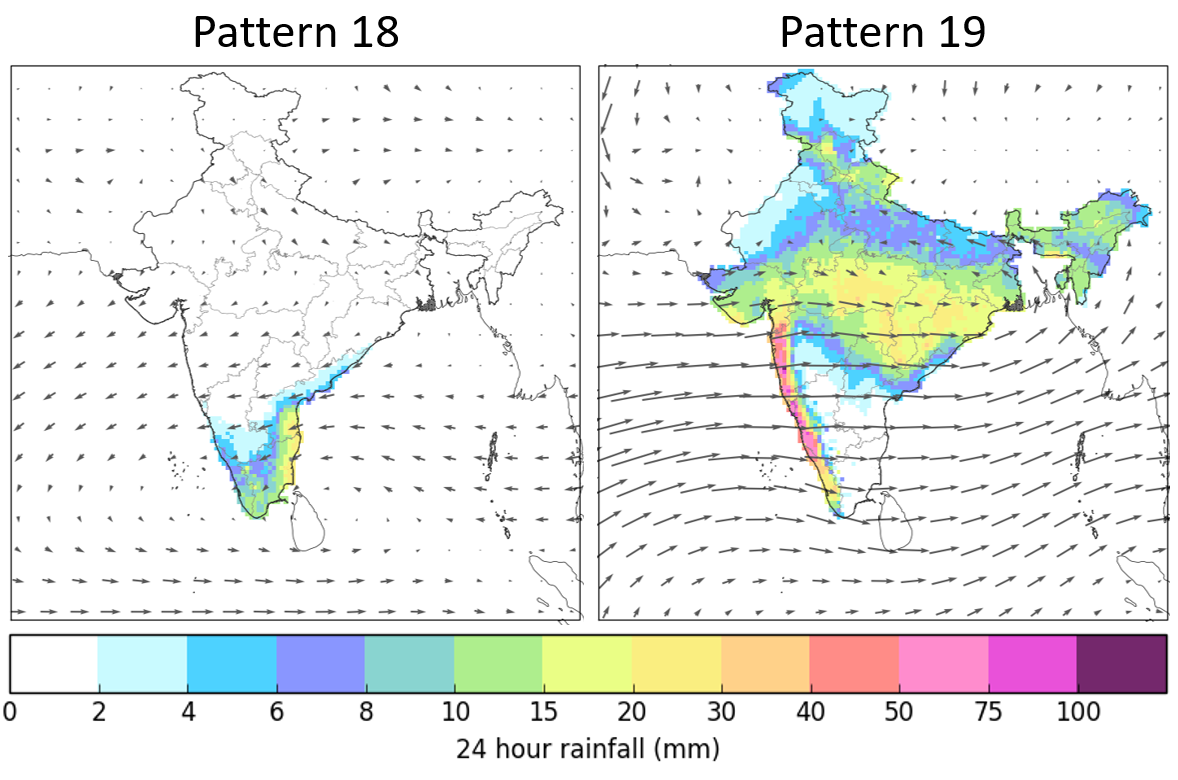Studying weather patterns - WCSSP case study
A new weather pattern forecasting tool developed as part of the WCSSP Programme has the ability to provide an earlier assessment of the potential impacts from extreme weather events.
Weather patterns describe the dominant characteristics associated with particular conditions such as wet or dry weather. The Weather and Climate Science for Service Partnership India project has developed a new weather pattern forecasting tool that has the ability to provide an earlier assessment of the potential impacts from extreme weather events, which could help save lives and livelihoods.
Studying weather patterns
Weather patterns can characterise the dominant conditions associated with different types of weather in a particular region, such as wet or dry, which can give an indication of risk of associated hazards such as flooding or landslides. Every location has its own unique set of weather patterns which represent the typical climate in that area throughout the year. Each weather pattern can also be linked to specific impacts on different sectors such as agriculture, energy or transport. If these patterns are predictable in advance then warnings of these impacts could be given ahead of time and earlier than typical weather forecasts.

Weather patterns are associated with different characteristics such as heavy rainfall.
New weather pattern tool applied over India
The WCSSP India project identified a set of 30 weather patterns for India and has shown they can all be skilfully predicted up to two weeks in advance.
Robert Neal at the Met Office explains “We looked back at the devastating floods in Kerala in August 2018 to see if a new tool we were developing could have given us an indication of what was going to happen. It showed that 10 days ahead of the event it was forecasting a weather pattern associated with high levels of rainfall in the region.”
The project also looked back at another case study, the flooding in Mumbai in September 2018. Again, this new tool showed that a weather pattern associated with heavy rainfall in the Mumbai region was most likely 10 days ahead of the event. The forecasting tool has now been shared with WCSSP India partners who are using it with their own weather forecasting models.

An example of two contrasting weather patterns which have different patterns and intensities of rainfall. On the left weather pattern 18 is a retreating monsoon type and on the right weather pattern 19 is an active monsoon type.
“These weather pattern forecasts are very useful as they can be related to the likelihood of some disastrous events coming up in the medium-range period. The final output of this new tool is simple and can easily be transmitted to end users.” Dr Ashis Mitra, former Head of National Centre for Medium Range Weather Forecasting (NCMRWF), India.

Example output from the weather patterns forecasting tool, showing the % chance of different weather patterns occurring out to 10 days ahead using one of the forecasting models run at NCMRWF.
There are a number of potential applications for this new tool. Robert explains, “In the UK and over Europe we’re also using a similar tool and it has enabled us to highlight upcoming periods susceptible to coastal flooding and landslides. We look forward to working with our Indian partners to develop similar applications to help provide earlier forecasts of hazards and impacts”.
The WCSSP programme is now exploring the application of this tool to benefit other regions around the world such as Southeast Asia, South Africa and Brazil.


